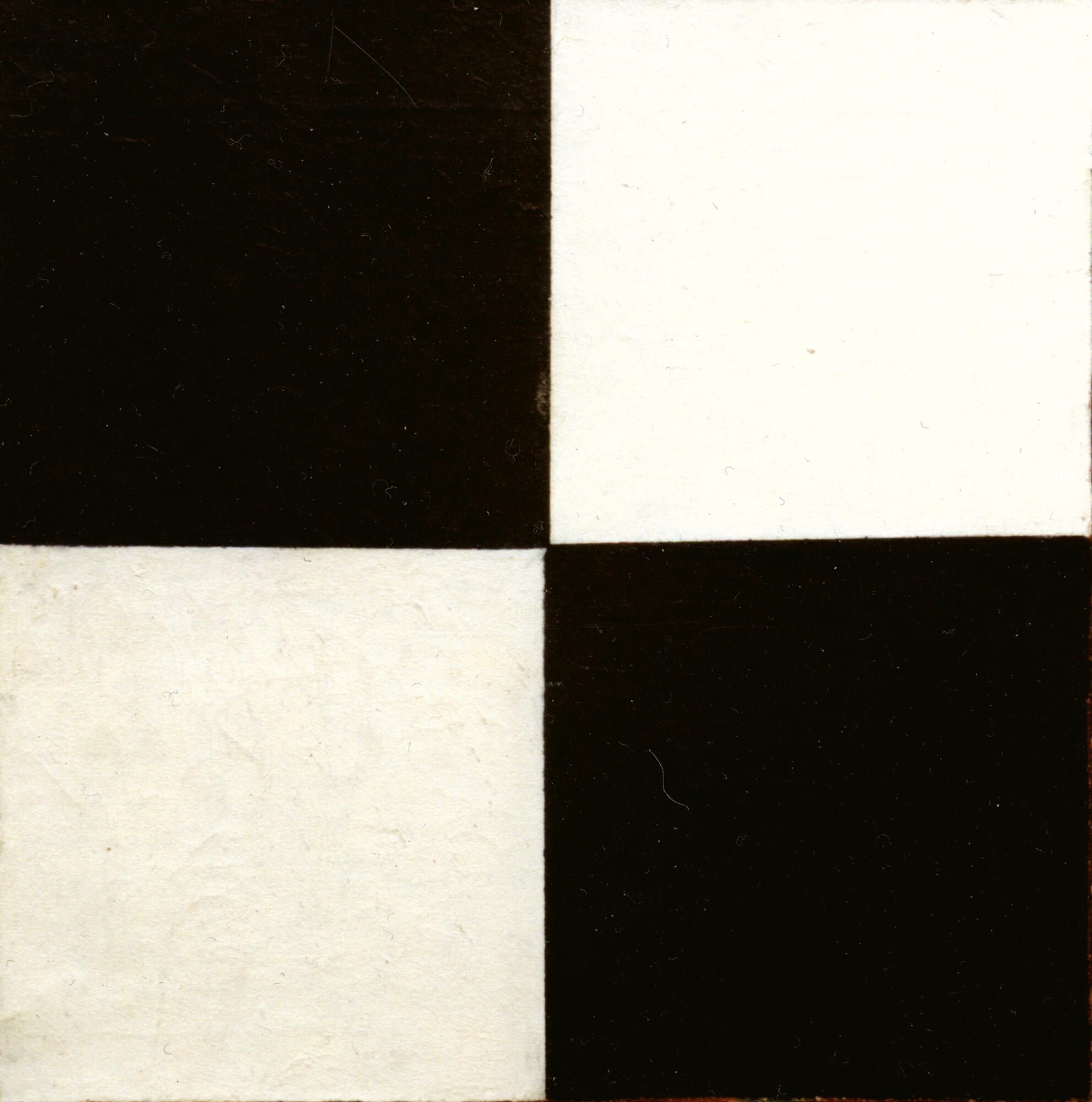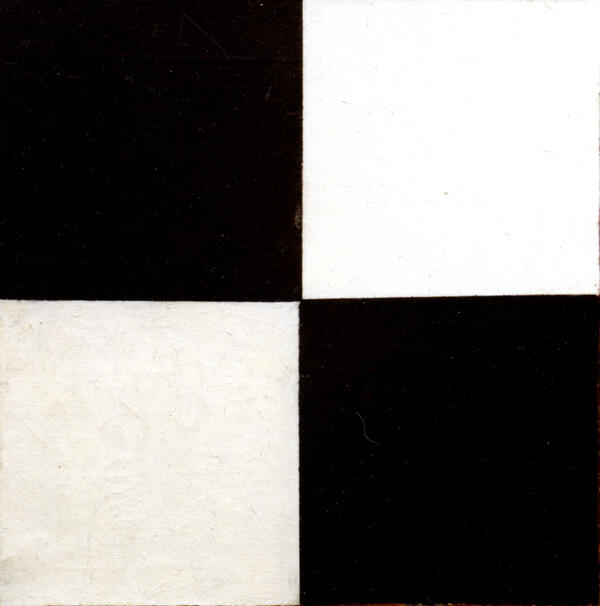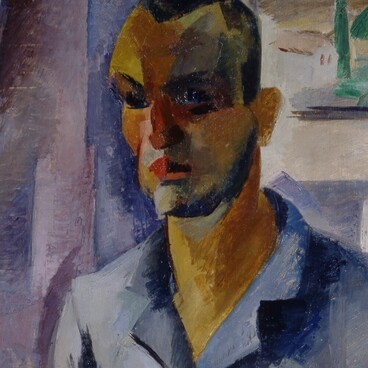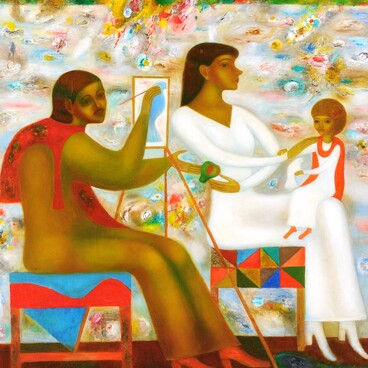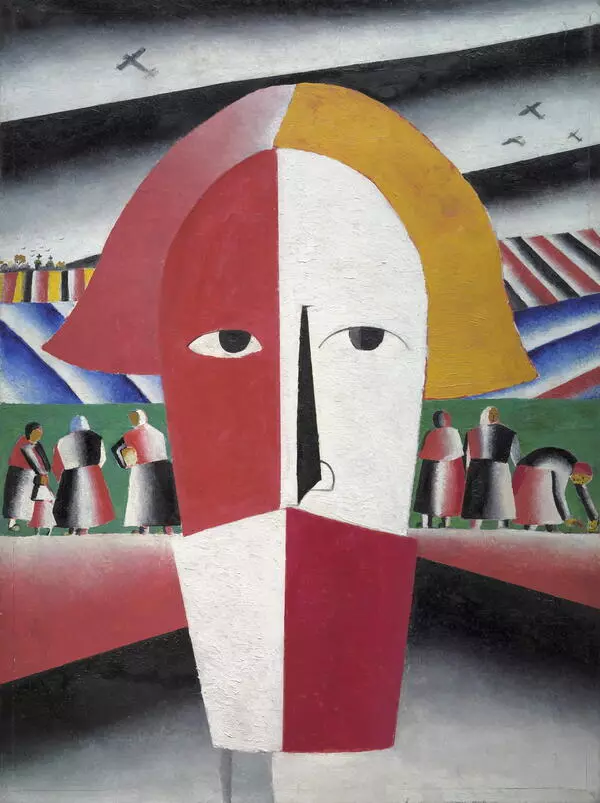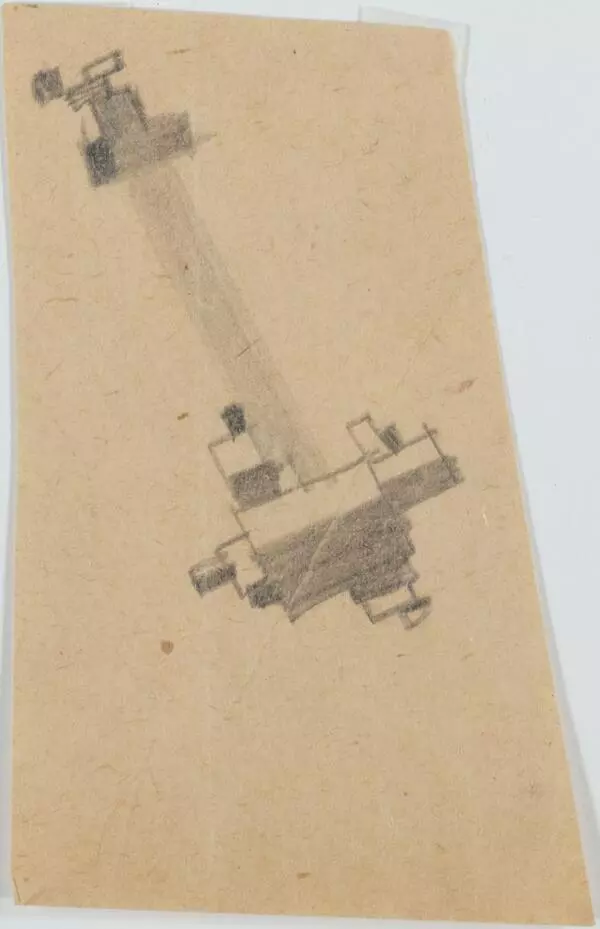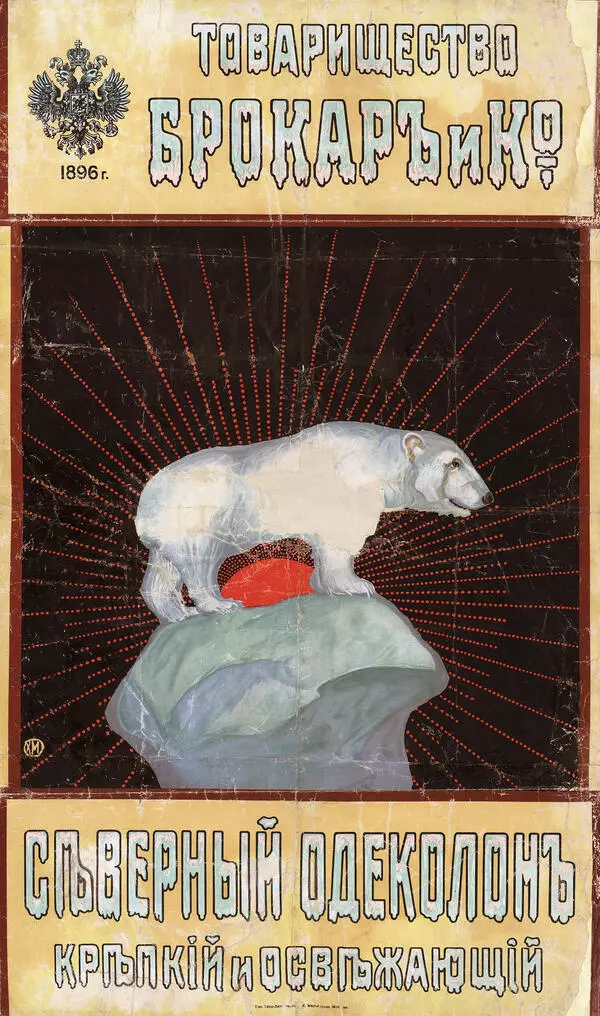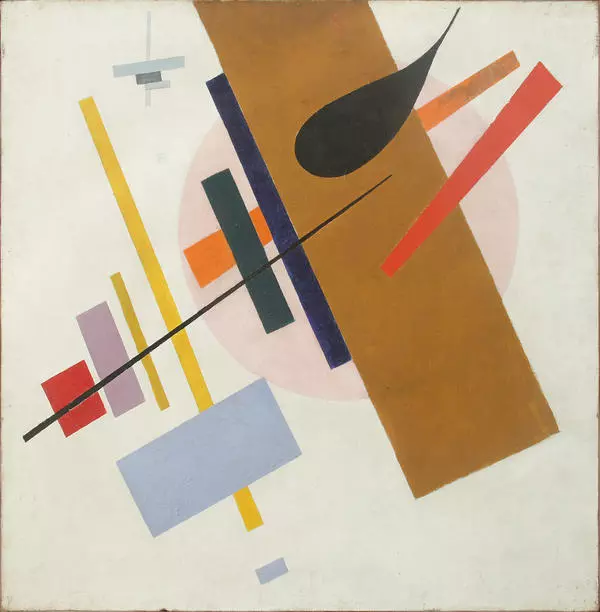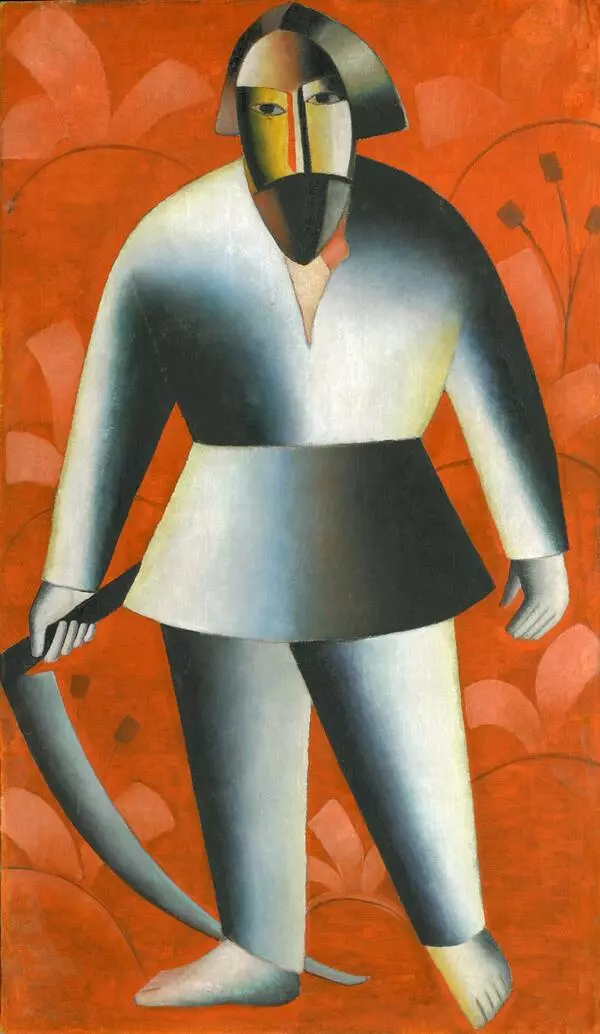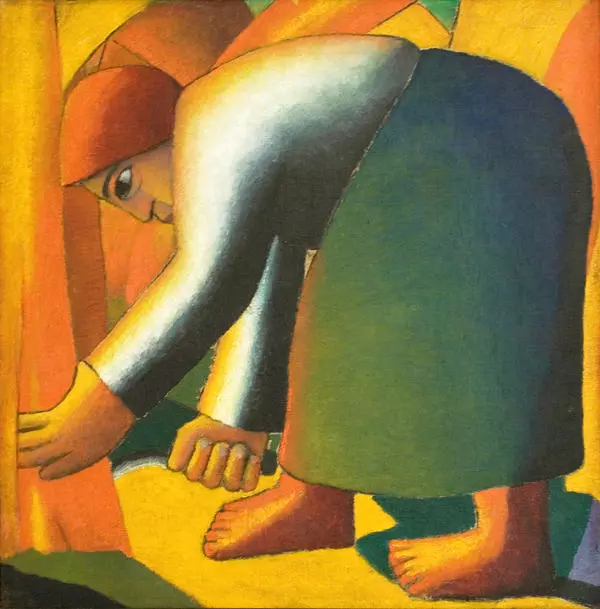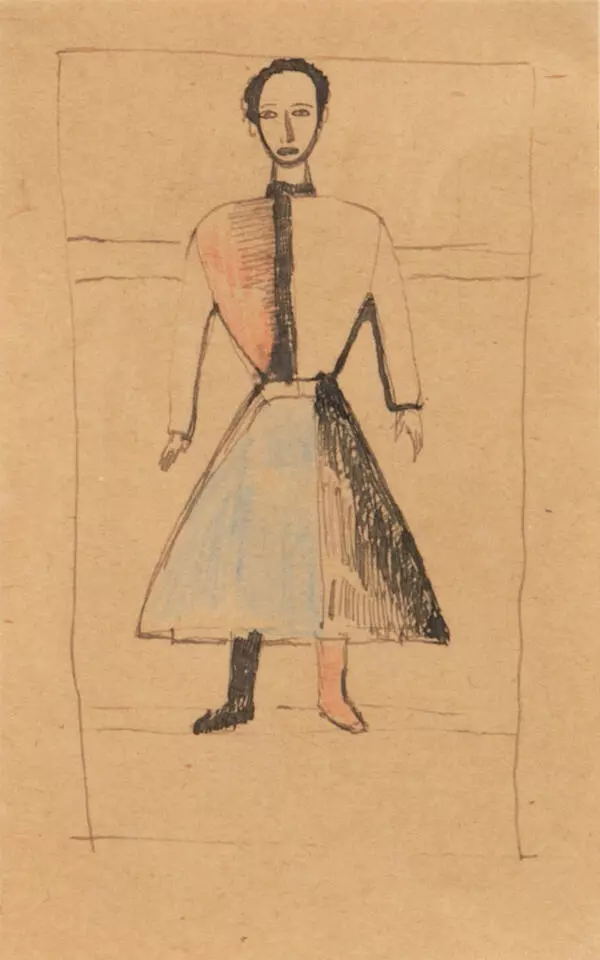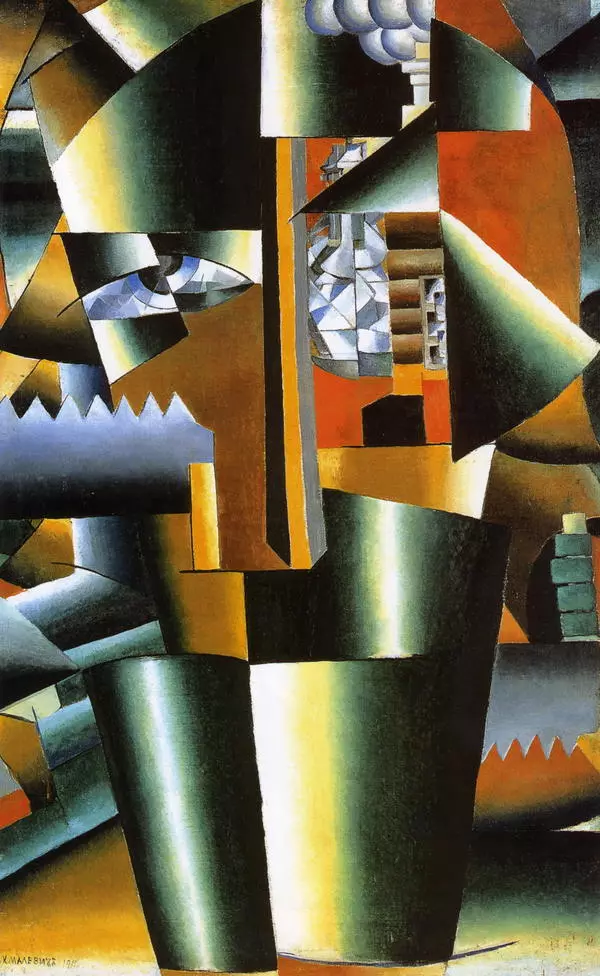Kazimir Malevich expressed the boundless freedom of creativity, which he felt in himself and to which he urged his viewers, giving them the opportunity to go beyond the traditional perception of a work of art and to see another - independent - life in the canvas and paints. From childhood, the future founder of Suprematism fell in love with multicolored views of the countryside, and later recalled the ‘armies’ of peasant women in bright dresses, and a painter whose brush transformed the roof of one hut. His early impressionistic landscapes are filled with the desire to recreate the beauty of the moment. Within a few years, natural impressions cease to play a leading role in Malevich’s works. In Self-Portrait, 1910 (State Tretyakov Gallery), the coloring more expresses a certain emotion than conveys the real coloring of things. It is as if the figures of the peasants in paintings such as The Mower (1912. Nizhniy Novgorod State Art Museum) and The Reaper (1912. Astrakhan State Art Gallery) are “sewn” from large planes of color.
In his cubist-futuristic experiments, Malevich seeks a way to overcome objectivity, breaks up the form into its component parts and “reshuffles” them, creating a new reality (An Improved Portrait of a Builder. 1913. State Russian Museum). Obsessed with the desire for a complete renewal of art, in the 1910s the artist regularly participates in exhibitions of artists with “leftist” inclinations: “Jack of Diamonds”, “Youth Union”, “Donkey”s Tail”, “Target”, “Tramway B”, and others.
What became the public declaration of a new trend in art - Suprematism - were the works Black Square, Black Cross, Black Circle, and other works by the artist; these were showcased at the “Last Futuristic Exhibition of Paintings “0.10”” (Petrograd, 1915). “Undoubtedly, this is the icon that the Futurist gentlemen can offer, instead of madonnas and shameless images of Venus, ” wrote Alexander Benois about the Black Square. The series of Suprematist paintings, according to the author”s train of thought, was supposed to show the viewer how, from “nothing”, from “zero forms”, by means of shifts and displacements new compositions are born that exist outside the world we have grown accustomed to. For example, in The Cosmos, a work with which the utopian dreams of the Futurists were associated, other laws governing space and time operate. Four Squares, which arrived at the Radishchev Museum from the State Museum Fund in 1929, represents one of the stages in the formation of Malevich’s distinctive world.
Malevich’s Suprematist experiments led him to a new understanding of beauty and classicism in art. Despite their shocking creativity and declared break from their canon, the most vivid representatives of Russian avant- garde - Kazimir Malevich, Vasiliy Kandinskiy, Vladimir Tatlin - were primarily creators, and organically perpetuated the traditions of modernism at the turn of the 19th and 20th centuries, with its desire to intuitively comprehend life. Taking their cue from Mikhail Vrubel, they could have said: “Beauty is our religion, ” seeing beauty in lines and pure colors, freeing them from the “oppression” of the laws of the surrounding world.
In his cubist-futuristic experiments, Malevich seeks a way to overcome objectivity, breaks up the form into its component parts and “reshuffles” them, creating a new reality (An Improved Portrait of a Builder. 1913. State Russian Museum). Obsessed with the desire for a complete renewal of art, in the 1910s the artist regularly participates in exhibitions of artists with “leftist” inclinations: “Jack of Diamonds”, “Youth Union”, “Donkey”s Tail”, “Target”, “Tramway B”, and others.
What became the public declaration of a new trend in art - Suprematism - were the works Black Square, Black Cross, Black Circle, and other works by the artist; these were showcased at the “Last Futuristic Exhibition of Paintings “0.10”” (Petrograd, 1915). “Undoubtedly, this is the icon that the Futurist gentlemen can offer, instead of madonnas and shameless images of Venus, ” wrote Alexander Benois about the Black Square. The series of Suprematist paintings, according to the author”s train of thought, was supposed to show the viewer how, from “nothing”, from “zero forms”, by means of shifts and displacements new compositions are born that exist outside the world we have grown accustomed to. For example, in The Cosmos, a work with which the utopian dreams of the Futurists were associated, other laws governing space and time operate. Four Squares, which arrived at the Radishchev Museum from the State Museum Fund in 1929, represents one of the stages in the formation of Malevich’s distinctive world.
Malevich’s Suprematist experiments led him to a new understanding of beauty and classicism in art. Despite their shocking creativity and declared break from their canon, the most vivid representatives of Russian avant- garde - Kazimir Malevich, Vasiliy Kandinskiy, Vladimir Tatlin - were primarily creators, and organically perpetuated the traditions of modernism at the turn of the 19th and 20th centuries, with its desire to intuitively comprehend life. Taking their cue from Mikhail Vrubel, they could have said: “Beauty is our religion, ” seeing beauty in lines and pure colors, freeing them from the “oppression” of the laws of the surrounding world.
